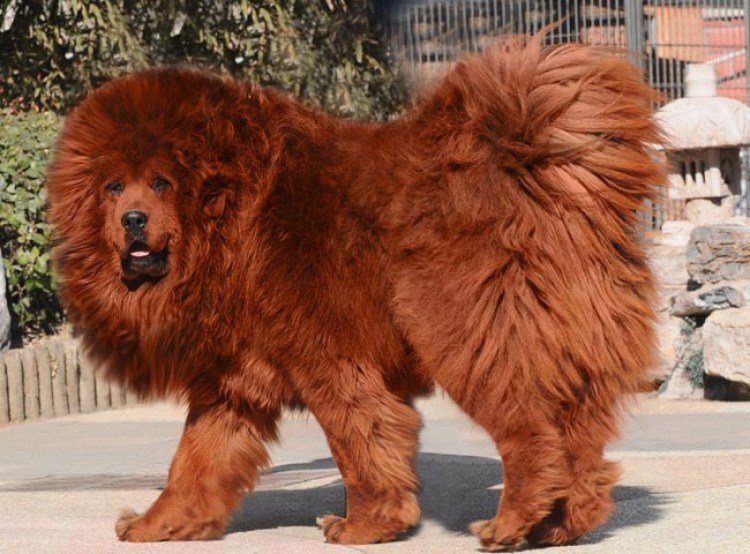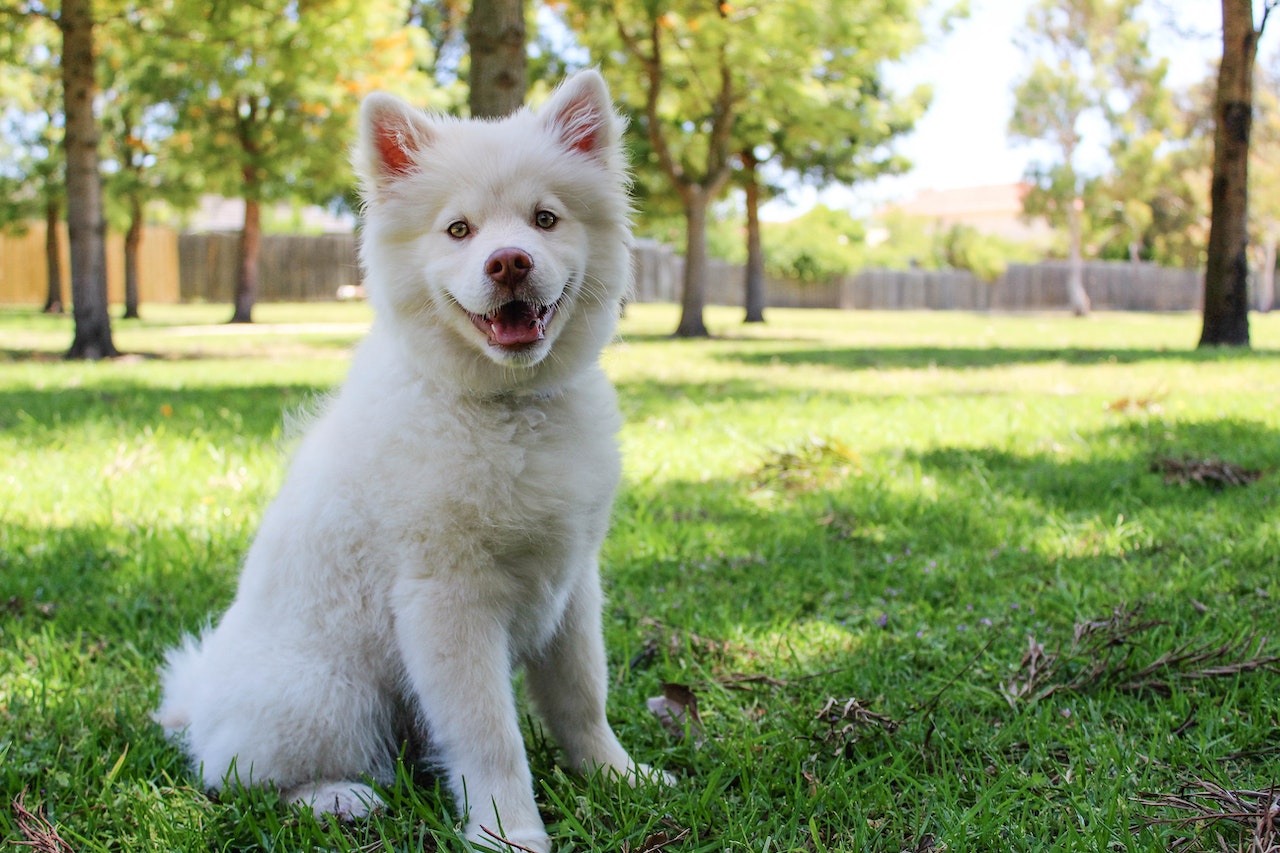This small, medium and large dog size guide is an incredibly helpful tool if you’re thinking about getting a dog and would like to know which size is the most suitable for you, your family, and your house.
Also, if you’re the proud owner of a dog and are wondering what size is he categorized as, we’ve put together a super useful dog size guide below to help you work it out.
Man’s best friend comes in a variety of shapes and sizes.
In fact, dogs are one of the most varied species of animals on the planet, having been bred throughout the generations into sizes small enough to fit into your purse all the way through to giant specimens akin to a small pony.
Let’s begin our journey by looking at how dog sizes are determined, along with the names of the categories given to each different breed.
Dog Weight And Size
Dogs are split into their separate size categories using their weight class, to begin with. The weight of each breed is then split into three groups; small, medium, and large.
There are some sub-categories along the way as well, but we’ll go into more detail over those a little later on.
The weight of each breed can vary from dog to dog as well, and so to keep the categories as simple as possible, a weight range is used to determine their size.
This is usually only within a few pounds, and if your dog is falling outside of this weight range for their size it’s usually an indication that they’re carrying a little extra weight.
Below, we’ve listed each size category for dogs, along with the ideal weight range for each.
Using this will help you determine which group your dog belongs to:
- Small Dogs: 2lbs – 22lbs
- Toy Dogs: 2lbs – 12lbs
- Teacup Dogs: 4lbs or less
- Medium Dogs: 24lbs – 57lbs
- Large Dogs: 59lbs – 99lbs
- Giant Dogs: 100lbs+
Why Do You Need To Know The Size Of Your Dog?
Determining the size group that your dog belongs to is a useful tool when it comes to ensuring they are getting the correct diet, the right amount of exercise, and generally caring for them properly.
A small dog will need a lesser daily calorie intake, while a giant dog will need to eat much more to keep them healthy.
Likewise, a smaller dog will be unable to exercise or cover the same walking distance as a larger dog without potentially injuring itself.
Knowing the size group and weight of your dog is also incredibly important when it comes to administering certain medications and treatments, such as flea drops and worming tablets.
Too much and your dog could become seriously ill. Not enough, and it’ll have no effect at all.
If you have no idea how much your dog weighs, it’s worth taking them to your veterinarian who will have specialized scales and will be able to give you an accurate measurement.
This will help you work out which size category your dog belongs to, and will allow you to feed, exercise, and care for them properly.
Let’s now go through each different size group in-depth, along with some examples of the breeds of dogs that belong to each category.
Small Dogs
Over recent years, small dogs have risen in popularity for their handheld size matched with their huge personalities.
Their miniature stature makes them a popular choice for smaller households and working couples with smaller apartments, as they take up a lot less room than a larger dog.
There are some health issues that small dogs can suffer from, and this is due to generations of breeding to get them to a smaller and smaller size.
Having said that, however, small dogs are among the most long-lived and have an average lifespan of between 12 and 18 years.
Some small breeds of dogs were originally bred for hunting and pest control, and this can mean that their sheer tenacity can lead to behavioral issues.
This means that they can take a little more training than larger breeds of dogs.
Their excitement can often be mistaken for aggression when they come into contact with another dog too, so training and socialization from a young age is the key to success with a small dog.
If you’re considering getting a small dog, you need to consider the time you have for training.
And, whilst they make excellent watchdogs, you’ll also need to think about the effect their barking will have on your neighbors.
A small dog’s height can range from 6”-18”, and their weight class ranges between 2lbs – 22lbs.
Take a look at some examples of small breeds of dogs below:
- French Bulldog
- Dachshund
- Jack Russell Terrier
- Pug
- Cockapoo
- Beagle
Toy Dogs
One of the two subcategories of small dogs is toy dogs. These are really small in size, but what they lack in stature they more than makeup for in personality!
This often manifests in a vocal way, and they have an excited yappy-bark which they use to not only alert you to a potential intruder but also to let you know they need something.
Toy dogs are also fairly active for smaller dogs and will often run around your house at speeds you wouldn’t think they’d be able to reach given their tiny size.
As with small dogs, toy dogs also require a great deal of training to bring their behavior up to standard.
This is definitely something to consider if you’re thinking about getting a dog from the toy-sized category, as you’ll need to take the time and effort to train them correctly.
Their lifespan is similar to that of a small dog and averages between 12-18 years.
Toy dogs don’t tend to suffer too much from hereditary medical issues, however, their Napoleonic personalities may get them into trouble if they choose to pick a fight with a larger dog!
Toy dogs generally never reach more than 12” in height, and their weight ranges from 5lbs – 12lbd depending on the breed.
You can find some examples of toy dog breeds below:
- Pomeranian
- Shih Tzu
- Maltese
- Chinese Crested
- Pekinese
Teacup Dogs

The second subcategory of small dogs, teacup dogs are the smallest of all dog breeds and are iconic for their eternal puppy-sized stature.
Much like toy dogs, they are also extremely excitable and this manifests in an incredible vocal range that you wouldn’t expect from an animal that’s so small.
Classifying a teacup dog is a little bit trickier to do than some other breeds, as this is mainly due to the fact that the American Kennel Club does not recognize teacup dogs as specific breeds.
Generally speaking, however, a dog that weighs no more than 4lbs once it’s reached maturity can be classified as a teacup breed.
Teacup dogs also have a longer lifespan than larger breeds of dogs, averaging around 12-18 years.
However, years and years of breeding to get them to such a small size has lead to many breeds suffering from hereditary health issues, which can result in expensive veterinary bills and medication to keep them healthy and happy.
Perfect for small households and apartments, a toy dog is almost unrivaled in the cuteness stakes and is guaranteed to bring your family years of joy.
Some breeds of toy dog include the below:
- Teacup Chihuahua
- Teacup Maltese
- Teacup Yorkshire Terriers
- Teacup Bichon Friseé
- Teacup Pomskies
Medium Dogs
Moving up a bit in the size category, next we have medium dogs.
These breeds are often considered to be the best of both worlds, as they are small enough to make them a perfectly sized family pet, and are active enough to play without needing a ton of daily exercise or being overly hyperactive.
Medium-sized dogs don’t have the same life expectancy as their smaller cousins and average around 10-13 years instead, but this is still quite a long lifespan for a dog.
They also don’t tend to suffer from as many hereditary health issues as smaller dogs, which makes them relatively easy to care for.
They also make fantastic working dogs and are renowned for their intelligence.
Some medium dog breeds make great guard dogs, whilst others are trained to be able to provide emotional and physical support.
Breeds such as Collies are even able to help farmers round up their sheep.
The weight range of a medium dog is between 24lbs – 57lbs, and their height varies from 18”-25” at the shoulder.
They are measured this way as the head can add considerable height depending on the breed.
The medium category also holds the highest number of dog breeds, some of which include the following:
- Dalmatian
- Labrador
- Border Collie
- British Bulldog
- Basset Hound
Large Dogs
Despite their seemingly daunting size, the large dog category contains some of the friendliest breeds you’re ever likely to encounter.
The only issue is that they can have a tendency to forget their size, and will often try to settle down or curl up in your lap!
As with any breed of dog, aggression is trained into them by bad ownership, so if you’re considering getting a large dog don’t let any of the bad press some breeds have suffered from over recent years prevent you from doing so.
You’ll need to spend some time training them, but they are extremely intelligent and will learn very quickly.
When it comes to the life expectancy of a dog, the larger the dog is the less of a lifespan it has. Therefore, breeds in the large dog category will usually average around 8-10 years in total.
This is dependent on each different breed, however, as well as the diet and exercise they’ve been given throughout their life.
One issue that large dogs can suffer from is musculoskeletal problems. This due to the sheer weight of their muscle being held by their skeleton, and this issue often presents itself in the hips.
Regular exercise throughout their life can help keep this problem at bay, as can a diet that is rich in nutrients that will keep joints healthy.
Large dogs also make fantastic working dogs, especially if there is heavy labor to undertake. Some breeds, such as Huskies, can even be used for sledding over great distances.
They don’t make great service dogs, due to their inherently friendly personalities, but they certainly make a fantastic guard dog that anybody would think twice about crossing.
The weight range of a large dog is between 59lbs – 99lbs, and they can grow as tall as 30” at the shoulder.
Their build can also vary quite dramatically, with some larger dogs being quite slender and others being much bulkier.
Some breeds of large dog include:
- Golden Retriever
- Rottweiler
- German Shepherd
- Alaskan Malamute
- Boxer
Giant Dogs

The final size category is reserved for the largest of all dog breeds.
As the name suggests, giant dogs are absolutely huge in both size and weight, and much like large dogs, they are a lot friendlier than their appearance might suggest.
Their friendly demeanor makes them great family dogs, but you’ll need to make sure your house is large enough to accommodate one.
They are also great with children and other dogs, but their size and playfulness could mean that they may accidentally end up hurting them, so training and a closely-kept eye during playtime are essential.
As with large dogs, giant dogs also have musculoskeletal problems as their bones support the weight of their muscle.
They can also suffer from hereditary health problems in the same way that smaller dogs can, as generations of breeding have led to them getting larger and larger.
The life expectancy of a giant dog is also the shortest of all dog breeds and averages around 5-8 years.
This is something you should consider if you’re thinking of getting a giant breed of dog for working purposes, as they won’t be able to continue working much longer than 3 or 4 years before they need to retire.
Giant dog breeds come in at a huge 100lbs+ on the scales and can measure way past 30” in shoulder height.
Again, this is something to consider when comparing your living space with the size of a giant dog.
They also follow a similar build variation to large dogs too, with some being tall and slender, whilst others are stockier and bulky.
Some of the most famous breeds of giant dogs include the following:
- Great Dane
- Newfoundland
- Mastiff
- Irish Wolfhound
- Saint Bernhard
Final Word
When you’re looking at the different sizes of dogs, there is quite a lot you need to consider, especially if you’re thinking about adopting or purchasing a certain breed for the first time.
Keep in mind the amount of living space you’re able to offer your new canine friend, and make sure you can both co-habit comfortably.
You’ll also need to think about your family and, if you’ve got young children, make sure that you’ve got the time to train your dog properly so that they behave around each other.
The lifespan and health of a dog is another important factor to consider when looking at different sizes.
Smaller dogs tend to live a lot longer than larger breeds, however, they can come with more health issues.
Whichever size of dog you opt for, give them the correct diet, exercise them frequently, and you’ll be rewarded with years and years of love and devotion from your new best friend.


